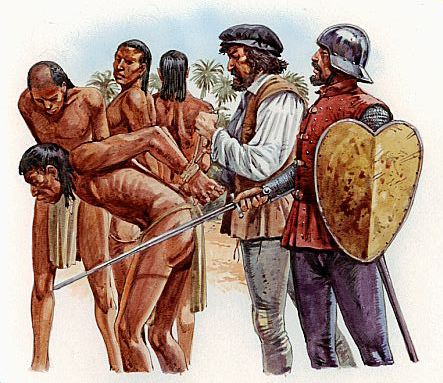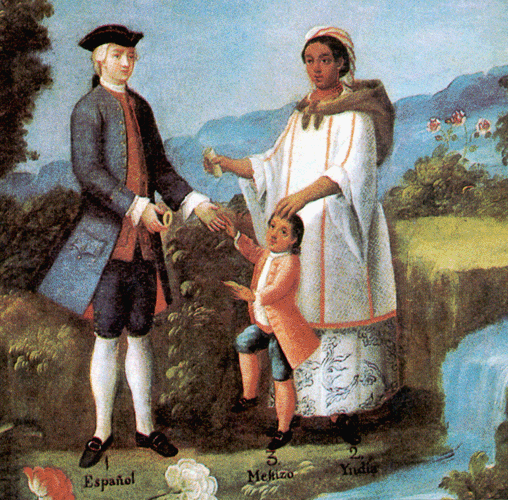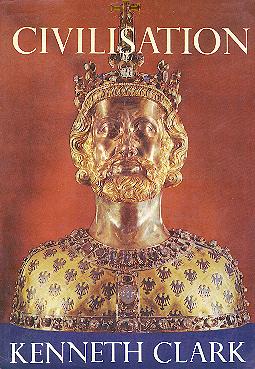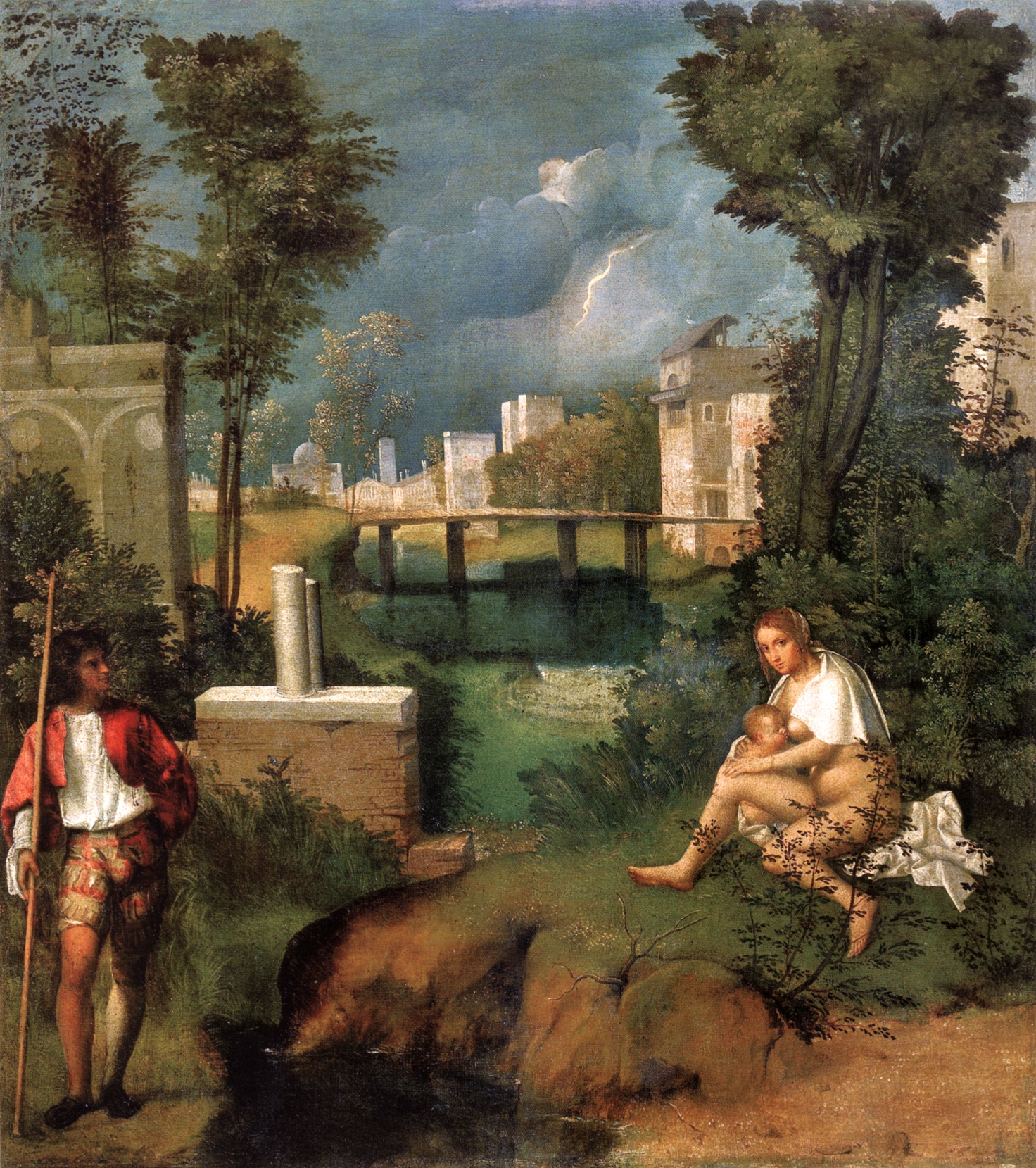This post has been moved: here.
Tag: Materialism / capitalism
Excerpted from Tom Sunic’s
recent article at The Occidental Observer:
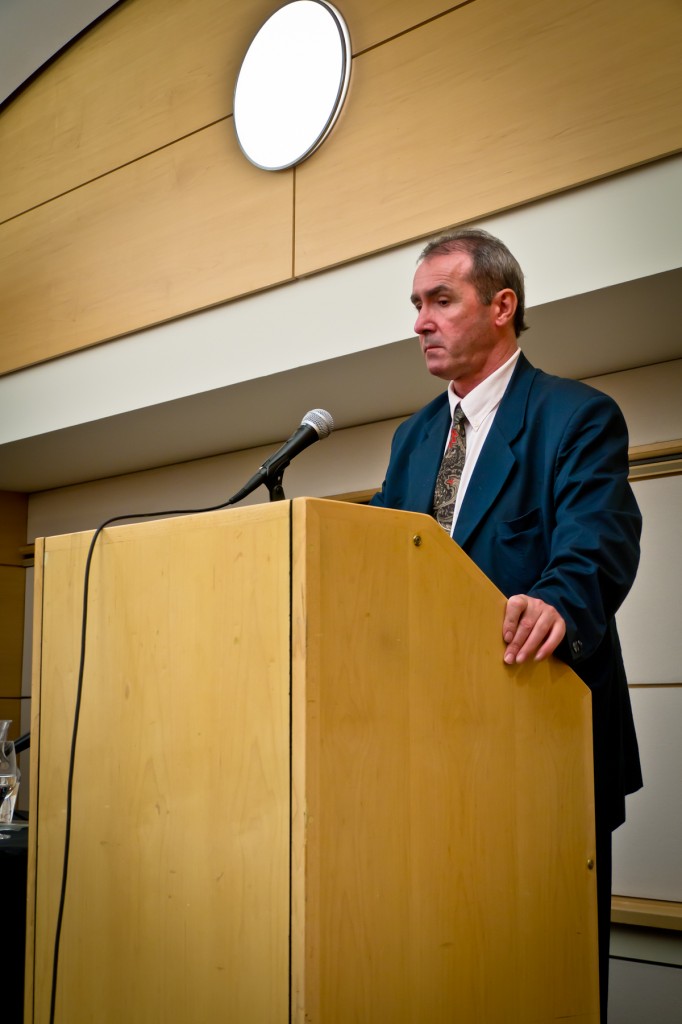
We often confuse the causes of non-European immigration with its effects. We hunt after a wrong scapegoat. Let us try to clarify it…
The blame for non-European immigration and the decomposition of the European peoples must not be solely borne by the immigrants. It is in the interest of the local capitalists to get a million-strong reserve army of cheap labor to Europe and to the U.S.; in turn, they can lower the wages of their domestic workers. Furthermore, non-European immigrants have little social consciousness, a weak sense of the trade union adherence and practically no sense for the European destiny. Therefore, they can be better manipulated by the local capitalists. One should consider therefore the globalists, the plutocrats and the financial “superclass” as the main enemy of the European peoples. A German stockbroker, or a Croatian or a Russian ex-communist speculator turned now into a capitalist shark, does not care where his nation is—as long as he can rake in big money.
We are all witnessing a reemergence of the silent holy alliance today—an alliance between the ex-Commissar and the Merchant, i.e. the marriage between the left-winger and big business. The European Left is in favor of mass immigration, given that the exotic picture of the non-European immigrant represents for it now the ersatz symbol of its long gone proletariat. For the capitalist, it is beneficial to bring people from the Third World into Europe, because they can best serve the interests of anonymous capital. The capitalist strives towards the removal of his people, because his people are too expensive for his business transactions. A leftist “antifa” wants to erase his people because it will always remind him of the rising “fascist beast.”
But the Church also bears a heavy responsibility for the decomposing situation of the European nations, especially with its ecumenical parlance of “help thy neighbor.” Americans, Europeans and White Christians are nowadays more concerned about the welfare of non-European peoples than the welfare of their own. A rich Qatari, or an oil sheik from Saudi Arabia could not care less are about the young unemployed and destitute masses in Moldova, or the working poor in France of Spain. He does not feel much inclined to help his own kind in Palestine in the first place, let alone give a thought to the suffering of the millions of the unemployed in Europe. The influential American Cardinal, Timothy Dolan, also known “as the American Pope” openly preaches in the American media the necessity of the open borders and openly advocates the protection of illegal immigrants in the USA.
Therefore it is wrong to blame only stateless plutocrats, ethnic lobbies, or starry eyed leftists in their decomposition endeavors of the European peoples. Regarding the destructive equality doctrine by Christian savants, I’ will not discuss it here. I’ll refer you to my papers and books.
♣
From Hunter Wallace’s September 28, 2012 “OD’s Indictment”
In preparation for writing OD’s [Occidental Dissent] first book, Shattering The Golden Circle: The Failure of Free Society in Dixie, Haiti, and the Caribbean, I have spent months intensely researching the rise and fall of slavery in the Caribbean and American South.
I’ve been trying to understand why slavery was destroyed and why approximately four million free negroes were turned loose on our society.
I don’t have to tell you that the consequences of the abolition of slavery have haunted us to the present day. I’m getting to the stage where I am starting to draw some firm conclusions about how and why this happened:
(1) First, New World slavery was overthrown during “the long nineteenth century” from 1770 to 1890.
(2) Second, the decline of the West is not due to a Jewish conspiracy, although Jews have thrived as an effect of the moral decay, especially in the twentieth century. It is not due to any inherent biological predisposition on the part of Whites to embrace racial and cultural suicide either.
(3) Third, I am convinced that the decisive years in pushing the West down the present road to suicide are 1750 to 1850.
(4) Fourth, the culprit is a moral, religious, and ideological revolution in worldview during this period that led to the creation of secular and religious versions of humanitarianism that have progressively undermined the foundations of our civilization.
(5) Finally, the twin doctrines that are to blame for our decline, which brought about this critical shift in moral outlook, are the Enlightenment’s ideology of liberal republicanism and the spread of evangelical Christianity.
This is the ultimate source of the “black cloud” that hangs over our civilization. Discuss.
Note: I will also speculate that industrial capitalism created a middle class that was peculiarly receptive to this worldview – the perfect triumphalist bourgeois ideology – and that the spread of liberal democracy gradually empowered this class in the West which used its newfound power to “progressively” act out its utopian fantasies.
Why did the South and the Caribbean deviate so strongly from this general direction in the nineteenth century? In the South and the Caribbean there was a third cultural pole, race-based plantation slavery, which created a stronger cultural immune system.
Half a year ago the admin of a Catholic, counter-Jihad website in Spain commented in this blog.
Mexico’s backwardness has been the result of its governments after independence, which has been mostly in the hands of whites. Its historical demise is due to the fact that the whites are not breeding, as it is the case, unfortunately, of so many white nationalists.
I quote this friend because his Catholic views reflect exactly the ideology that ruined this part of the American continent: blaming the few whites in charge of a nation consisting of a sea of brown people and sparing the Catholic, Universal ethics that caused the non-white population explosion in the first place.
Arthur Kemp’s March of the Titans is a comprehensive book about the odyssey of the white race, presently available only in printed format. After a long transcontinental research Kemp concludes that colonization is only successful when the colonizers ensure that they demographically replace the native population. “Anything less than that will cause the colonial experiment to fail.” Kemp demonstrates his thesis not only through the paradigm of his native Rhodesia, but of every other geographical entity that had been conquered by whites in the last millennia only to be re-conquered by the natives after overwhelming the white conquerors demographically.
William Pierce had reached identical conclusions in Who We Are: ethnic cleansing is the only way to succeed, and, as he hinted in other texts, to do that we must abandon Christian meta-ethics altogether.
Over the boards I’ve said it many times and will say it again: Pace my Christian friends, the price to save the West is to give up Christian axiology, and its secular offshoots, that presently are infecting our minds and our sense of decency.
* * *
Excerpted from the 22nd article of William Pierce’s “Who We Are: a Series of Articles on the History of the White Race”:
The native Amerinds found by the Spaniards in the West Indies were, like those of the mainland, of Mongoloid derivation, being the descendants of Mongoloid peoples who had begun crossing the Bering Strait from Siberia to North America some 12,000 years ago and had then gradually propagated throughout the empty North and South American continents and the adjacent islands.
Since the Spaniards’ entire purpose in the New World was economic exploitation, not the propagation of their own race, they did not deliberately liquidate the native population. In some areas, however, that was the inadvertent effect of the Spanish conquest. The Indians were not constitutionally suited to the unremitting slave labor in the gold and silver mines and on the sugar plantations which was forced on them by their new masters, and they died like flies under the Spanish yoke.
An enormous toll was also taken by smallpox, a disease endemic among the Europeans but one to which the Amerinds, isolated as they had been for thousands of years, had no natural immunity. It virtually depopulated the Caribbean islands and then wreaked havoc among the mainland Indians. (The Indian revenge was syphilis, a New World disease entirely new to the Europeans—at least, in the new and virulent form in which it existed among the Amerinds.)
Beginning of the Black Tide
Because of the inadequacy of the Indians as a local labor force, the Spaniards almost immediately began importing Negro slaves from West Africa. The latter belong to a race ideally suited to the plantation labor of that era. The Blacks were first used in the West Indies, then on the Brazilian mainland. Approximately a million of them were imported in the period 1550-1650, and by the latter date they had completely replaced the Amerind natives as a slave labor force on the Caribbean islands.
(Spanish-English translation of the painting footnote: Spaniard, Mestizo, Indian)
Approximately 150,000 Spaniards and Portuguese had migrated to the New World by the middle of the 17th century, and natural increase had raised their number to about 400,000. They ruled over about 9,000,000 Indians—and a growing population of mestizos (Indian-White mixed breeds), Blacks, mulattos, and Indian-Black mixed breeds. Only on the island of Cuba was there anything approaching a truly White Spanish or Portuguese community.
Northerners Arrive
From the beginning of the 17th century, however, Northern Europeans—English, French, and Dutch—began seriously contesting the Iberians’ claims on the New World. By 1650 nearly 50,000 English (and a few thousand French and Dutch) immigrants were settled on Caribbean land wrested away from the Spaniards, and another 50,000 had landed in North America.
In sharp contrast to the Spanish and Portuguese colonists, the great bulk of the Northern Europeans came to the New World not to exploit non-White labor and make money, but to settle and work the land themselves, in all-White communities. Thus, colonialism acquired two quite distinct meanings in the 17th and 18th centuries: a strictly economic meaning, which applied to all the Southern European and some of the Northern European colonies; and a racial meaning, which applied almost exclusively to the colonies of the Northerners.
The Pollution of the South
Today the only countries in South America which are substantially White are Uruguay (nearly 100 per cent), Argentina (between 80 and 90 per cent), and Chile (approximately 50 per cent).
Women and Plows
Most of the Northern Europeans who came to the New World had quite different motives than did the Spanish and Portuguese. Most of the latter came only to make money, and relatively few brought their women with them; from the beginning miscegenation was common in the areas controlled by the Iberians.
The Northerners, on the other hand, came for the land and the opportunity for a new life on a new frontier. They brought their women and their plows with them, and for the most part, they did their own labor. They saw in the Indians no opportunity for economic exploitation, but only a danger to their families. Until missionaries began making Christians of the Indians and taking their side against the Whites, the latter just pushed them aside, took their land, and formed all-White communities of farmers, craftsmen, and tradesmen, as they had in Europe.
Fuck America!
“America”—the propositional “nation,” i.e., the egalitarian capitalist system—is the most evil enterprise in human history if it can take a person one generation removed from a proud and healthy people with a strong identity and turn him into a deracinated nihilist like this.
Excerpted from the 13th article of William Pierce’s “Who We Are: a Series of Articles on the History of the White Race”:
Wealth inexorably undermined the old virtues. Decadence rotted the souls of the noble Romans. While the mongrel mobs were entertained by the debased spectacles in the Colosseum (not unlike the distraction of today’s rabble by non-stop television), the patricians indulged themselves with every new vice and luxury that money and a resourceful merchant class could provide. Pampered, perfumed, manicured, and attended by numerous slaves, the effete aristocracy of the first century A.D. was a far cry from the hard and disciplined ruling class of a few centuries earlier.
Just as there are Americans today who understand where the weakness and lack of discipline of their people are leading them and who speak out against these things, so were there Romans who tried to stem the tide of decadence engulfing the Republic. One of these was M. Porcius Cato, “the Censor” (234–149 bc), whose public career spanned the first half of the second century B.C.
Cato was born and raised on his father’s farm and then spent 26 years fighting in Rome’s legions before entering politics. Early in his career, having been appointed governor (praetor) of Sardinia, Cato set the pattern he would follow the rest of his life: he expelled all the moneylenders from the island, earning the undying hatred of the Jews and a reputation as a fierce anti-Semite.
Archreactionary
Later Cato was elected censor in Rome. The duties of a censor were to safeguard public morality and virtue and to conduct a periodic census of people and property for military and tax purposes. Cato took these duties very seriously. He assessed jewelry and other luxury items at ten times their actual value, and he dealt promptly and severely with disorder and degeneracy.
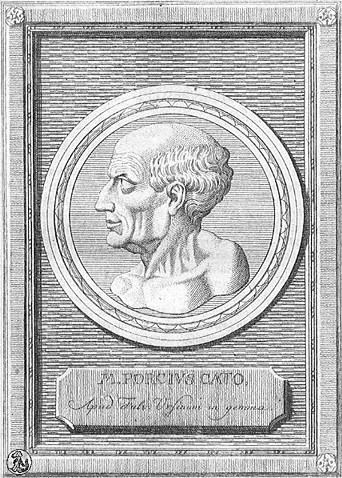 In the Senate Cato spoke out repeatedly against the foreign influences in philosophy, religion, and lifestyle which were encroaching on the traditional Roman attitudes and manners. As a result, Rome’s “smart set” condemned him (privately, for he was too powerful to attack openly) as an archreactionary and an enemy of “progress.”
In the Senate Cato spoke out repeatedly against the foreign influences in philosophy, religion, and lifestyle which were encroaching on the traditional Roman attitudes and manners. As a result, Rome’s “smart set” condemned him (privately, for he was too powerful to attack openly) as an archreactionary and an enemy of “progress.”
In the field of foreign policy, Cato was adamantly opposed to the integration of the Semitic East into the Roman world. He wanted Rome to concentrate on the western Mediterranean and to deal with the Levant only at sword point. Unfortunately, there were few men of Cato’s fiber left among the Romans by the second century.
Declining Birthrate
One of the most fateful effects of decadence was the drastic decline in the birthrate of the Roman nobility. Decadence is always accompanied by an increase in egoism, a shifting of focus from race and nation to the individual. Instead of looking on bearing and raising children as a duty to the state and a necessity for the perpetuation of their gens and tribe, upper-class Romans came to regard children as a hindrance, a limitation on their freedom and pleasure. The “liberation” of women also contributed heavily to this change in outlook.
The failure of the patrician class to reproduce itself alarmed those Roman leaders with a sense of responsibility to the future. Emperor Augustus tried strenuously to reverse the trend by issuing several decrees regarding family life. Heavy penalties were set for celibacy or for marriage with the descendants of slaves. Eventually, Augustus ordered that every noble Roman between the ages of 25 and 60 must be married or, at least, betrothed.
Suicide of the Nobility
In 9 A.D. tax advantages and other preferences were granted to the parents of three or more children; unmarried persons were barred from the public games and could not receive inheritances, while the childless married person could receive only half of any inheritance left to him.
All these measures failed. Augustus’ own daughter, Julia, was a thoroughly liberated member of the “jet set” of her time, who considered herself far too sophisticated to be burdened with motherhood. In embarrassment, Augustus banished her to an island.
From the dictatorship of Julius Caesar to the reign of Emperor Hadrian, a century and a half, one can trace the destinies of 45 leading patrician families: all but one died out during that period. Of 400 senatorial families on the public records in 65 A.D., during the reign of Nero, all trace of half of them had vanished by the reign of Nerva, a single generation later.
Rise of Capitalism
As the patricians declined in numbers, the Roman peasantry also suffered, but for a different reason. The later years of the Republic saw the rise of agricultural capitalism, with wealthy entrepreneurs buying up vast estates, working them with slaves and driving the freeborn small farmers out of the marketplace.
By the tens of thousands the Latin and Sabine yeomen were bankrupted and forced to abandon their farms. They fled to the city, where most of them were swallowed up in the urban mob.
“New Romans”
The capitalist nouveaux riches who came to wield much of the power and influence in Rome lost by the dwindling patricians were an altogether new type of Roman. Petronius’ fictional character Trimalchio is their archetype. Tenney Frank wrote of these “new Romans”:
It is apparent that at least the political and moral qualities which counted most in the building of the Italian federation, the army organization, the provincial administrative system of the Republic, were the qualities most needed in holding the Empire together. And however brilliant the endowment of the new citizens, these qualities they lacked. The Trimalchios of the Empire were often shrewd and daring businessmen, but their first and obvious task, apparently was to climb by the ladder of quick profits to a social position in which their children, with Romanized names, could comfortably proceed to forget their forebears. The possession of wealth did not, as in the Republic, suggest certain duties toward the commonwealth.
Different Spirit
Many historians have remarked on the fact that the entire spirit of the Roman Empire was radically different from that of the Roman Republic. The energy, foresight, common sense, and discipline which characterized the Republic were absent from the Empire. But that was because the race which built the Republic was largely absent from the Empire; it had been replaced by the dregs of the Orient.
The change in attitudes, values, and behavior was due to a change in blood. The changing racial composition of Rome during the Republic paved the way for the unchecked influx of Levantine blood, manners, and religion during the Empire.
But it also set the stage for a new ascendancy of the same Northern blood which had first given birth to the Roman people. We will look at the conquest of Rome by the Germans. First, however, we must backtrack and see what had been happening in the North during the rise and fall of Rome.
Excerpted from the 13th article of William Pierce’s “Who We Are: a Series of Articles on the History of the White Race”:
Today, when we speak of “Latins,” we reflexively think of short, swarthy, excitable people who are inordinately fond of loud rhythms, wine, spicy food, and seduction, and who aren’t to be taken very seriously. That is not an accurate image of all speakers of Romance languages, of course. Many individuals of French, Spanish, Portuguese, Italian, and Romanian nationality are as racially sound as the average Swede or German. Yet, the image persists, and for good reason.
The Latini, the Northern tribesmen who settled Latium in the ninth century B.C. and founded Rome a century later, were something altogether different. Most of today’s Latins share nothing with those of 28 centuries ago except the name. Not only are the two strikingly different in appearance and temperament, but every element of the culture the original Latins created as an expression of their race-soul has been fundamentally transformed by those who claim that name today.
Even the character and tone of the modern languages derived from that of the Latini are profoundly different. The Romance languages, overburdened with vowels, have a soft, effeminate air that was never present in the language of the early Romans, which was as hard and manly as the people themselves. (The Romans did not say See-sar or Sis-ero; they said Kai-sar and Kick-ero.)
Virtuous Race
Above all, the Latini were a people to be taken seriously. They brought with them to Italy the spirit of the northern forests whence they had come. They took themselves and life very seriously indeed.
Duty, honor, responsibility: to the early Romans these were the elements which circumscribed a man’s life. Their virtues (the Latin root of the word means “manliness”) were strength of body and will, perseverance, sobriety, courage, hardiness, steadiness of purpose, attentiveness to detail, intelligence, and the characteristically Nordic will to order. Through these virtues they brought the world under their sway and created a civic edifice of such magnificence that it has ever since provided the standard against which all others are measured.
The Romans shaped the world around them—its institution, its politics, its attitudes, and its lifestyles—more extensively and more profoundly than anyone else has, and then they perished. That fact has fascinated and occupied the energies of historical scholars as no other topic. What were the reasons that the Romans rose so high and then fell so far?
Typically Indo-European
When they arrived in the Italian peninsula in the ninth century the Latins, like their Italic neighbors before them, brought with them institutions and customs which were typically Indo-European. In a great many ways they remind us of the Mycenaean Greeks described by Homer. In the social and political institutions of the early Romans, in particular, we can see elements which were as familiar to the Dorians three centuries earlier as they were to the Celts and Germans ten centuries later. Just as the languages of all these kindred Northern peoples were derived from a common source, so were their modes of organizing and governing themselves.
The earliest history of the Romans is partly shrouded in the mists of antiquity. The Latins were not as fond of writing books as were the Greeks, and only a few inscriptions in stone have come down to us from the time prior to the fifth century B.C.—and not a great deal after that, until the second century B.C. The oral traditions of the Roman people from the eighth century B.C. are a blend of myth and history and must be taken cum grano salis, as they would have said.
Latins, Sabines, Etruscans
Very early in its history, Romulus’ hilltop village of Latins joined forces with a neighboring village of Sabines, the Titienses. The Sabines and the Latins were of very closely related Indo-European stocks, and the amalgamation did little to change social institutions, other than doubling the number of senators.
A few years later, however, the Etruscan Luceres—of non-Indo-European stock—were absorbed by the growing Rome. Although the Etruscans remained a tribe apart from the Latin and Sabine inhabitants of the city, without patrician status, this condition was destined not to last.
Kings of Rome
Tradition gives the date 716 B.C. for the death of the Latin founder of Rome, Romulus. He had long before carried out the amalgamation of his tribe with the Titienses, and a year after he died the combined Latin-Sabine populus chose a Sabine, Numa Pompilius, as the second king of Rome.
For a century the kingship alternated between Latin and Sabine, but about the year 616 B.C. it passed to a man who was neither. He was Tarquinius Priscus (Tarquin the Elder) and was said to be the son of a Greek father and an Etruscan mother. How a half-Etruscan came to be king of the Romans is not clear; the traditional account is not convincing.
Probably what happened is that Rome suffered a military defeat at the hands of one of the powerful Etruscan communities on the other side of the Tiber. In any event, Tarquin forced the Romans to accept 100 new patrician families from among the Etruscan inhabitants of the city. Although the Etruscan patricians were accorded a status subordinate to that of the elders of the Latin and Sabine clans (the former were designated patres minorum gentium, or “fathers of the lesser clans”), time eventually blurred this distinction; the Etruscans entered the Senate, bringing the number of senators to 300, where it remained for more than five centuries, until the dictatorship of Julius Caesar.
Servian “Reforms”
It was Tarquin’s successor, Servius Tullius, however, who wrought changes which were to have much more profound racial consequences: in essence, Servius made the plebs a part of the populus Romanus. He accomplished this by overshadowing the patrician assembly, the Comitia Curiata, with two new popular assemblies, one civil and one military.
Gold over Blood
Servius certainly cannot be accused of being a democrat. Yet he clearly initiated the process which eventually led to the ascendancy of gold over blood in Roman society, just as Solon had done in Athens a few years earlier.
Four Factors
The following centuries saw the political power of the plebs increase greatly relative to that of the patricians, while wealth continued to gain weight relative to race and family.
The Romans survived the founding of the Republic by roughly a millennium, but we are not concerned in this series with the political and cultural details of their history, except as these details have a salient racial significance. Therefore, the emphasis in the following historical summary is rather different than that found in most textbooks on Roman history.
Let us focus on four factors: first, the growing racial diversity of the Roman state; second, the eventual decadence of Rome’s patricians; third, the differential in birthrates between Rome’s patrician and plebeian classes; and fourth, the effects on the Roman peasantry of large-scale slavery as a capitalist institution.
Excerpted from the 10th article of William Pierce’s “Who We Are: a Series of Articles on the History of the White Race”:
And what a contrast between the Hellenes and their achievements, on the one hand, and what existed before—and has existed since—in Greece! That is not to say that every Greek of today is unimaginative or insensitive or ugly, but it is clear that something essential has been lost between the time of Aristotle and the time of his late namesake, Mr. Onassis. And the loss was at least as great between the time of Achilles and Aristotle, although the culture-lag phenomenon tends to mask this earlier decline in racial quality.
The Hellenic genes are still there, the genes of the race which gloried in single combat between equals facing one another on the field of battle and pitting skill, courage, and strength in a contest to the death, but they are now submerged in the genes of a race which always preferred to sling its stones from afar, to lie in stealthy ambush, to give a surprise knife-thrust from the rear. The race-soul which first envisioned the symmetry of the Doric temple and pondered the mysteries of existence as none before it has become inextricably mingled with one concerned, first and last, with personal advantage and disadvantage, profit and loss.
Extermination or Expulsion
This catastrophic mixing of bloods has occurred over and over again in the history and prehistory of our race, and each time it has been lethal. The knowledge of this has been with us a long time, but it has always failed us in the end. The Hellenes of Sparta and Athens both strove to keep their blood pure, but both ultimately perished. The only way they could have survived would have been to eliminate the entire indigenous population, either through expulsion or extermination, from the areas of the Mediterranean world in which they settled.
The Hellenes always possessed a certain feeling of racial unity, distinguishing themselves sharply from all those not of their blood, but this racial feeling was, unfortunately, usually overshadowed by intrarracial conflicts. The rivalries between Hellenic city-states were so fierce and so pervasive, that the Mediterranean natives were more often looked upon as a resource to be used against other Hellenes than as a biological menace to be eliminated.
Economics over Race
The ultimate downfall of the Nordic conquerors in Asia, just as in the Mediterranean world, can be traced to an economic consideration and to an error in human judgment. The economic consideration was that a conquered population, just like the land itself or the gold and other booty seized by the conquerors, had real value. Whether the people were enslaved or merely taxed as subjects, they were an economic resource which could be exploited by the conquerors. To drive them off the land or wipe them out completely would, from a strictly economic viewpoint, be akin to dumping captured gold into the ocean.
Such an action could be justified to a conquering tribe of Indo-Europeans only if they were willing to subordinate all economic considerations to the goal of maintaining their racial integrity into the indefinite future—and if they also had a sufficiently deep understanding of history to foresee the inevitability of racial mixing wherever two races are in close proximity. Unfortunately, even where the will for racial survival was very strong, the foresight was insufficient. Measures which were quite adequate to prevent racemixing for a few generations, or even for a few centuries, broke down over the course of a thousand years or more.
On Kenneth Clark’s “Civilisation”
Kenneth Clark may have been clueless about the fact that race matters. Yet, that our rot goes much deeper than what white nationalists realize is all too obvious once we leave, for a while, the ghetto of nationalism and take a look at the classics, just as Clark showed us through his 1969 TV series Civilisation.
Compared to the other famous series, Clark’s was unsurpassed in the sense that, as I have implied elsewhere, only genuine art—not science—has a chance to fulfill David Lane’s fourteen words.
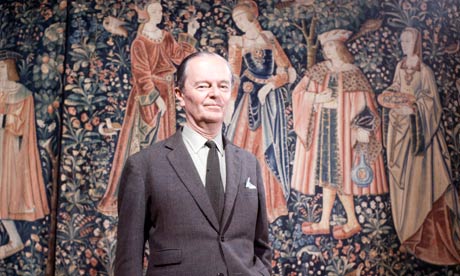 By “art” I mean an evolved sense of beauty which is almost completely absent in today’s nationalists. Most of them are quite a product of Jewish modernity whether with their music, lifestyles or Hollywood tastes, to a much greater degree than what they think. For nationalism to succeed an evolved sense of female beauty has to be the starting point to see the divine nature of the white race. In Clark’s own words, “For all these reasons I think it is permissible to associate the cult of ideal love with the ravishing beauty and delicacy that one finds in the madonnas of the thirteenth century. Were there ever more delicate creatures than the ladies on Gothic ivories? How gross, compared to them, are the great beauties of other woman-worshiping epochs.”
By “art” I mean an evolved sense of beauty which is almost completely absent in today’s nationalists. Most of them are quite a product of Jewish modernity whether with their music, lifestyles or Hollywood tastes, to a much greater degree than what they think. For nationalism to succeed an evolved sense of female beauty has to be the starting point to see the divine nature of the white race. In Clark’s own words, “For all these reasons I think it is permissible to associate the cult of ideal love with the ravishing beauty and delicacy that one finds in the madonnas of the thirteenth century. Were there ever more delicate creatures than the ladies on Gothic ivories? How gross, compared to them, are the great beauties of other woman-worshiping epochs.”
Below, links to excerpts of most of the chapters of the 1969 series, where Clark followed the ups and downs of our civilisation historically:
For an introduction to these series, see here.
Below, some excerpts of “The Light of Experience,” the eight chapter of Civilisation by Kenneth Clark.
Ellipsis omitted between unquoted passages:
I am in Holland not only because Dutch painting is a visible expression of this change of mind [the revolution that replaced divine authority by experience, experiment and observation], but because Holland—economically and intellectually—was the first country to profit from the change. When one begins to ask the question, ‘does it work?’ instead of ‘is it God’s will?’ one gets a new set of answers, and one of the first of them is this: that to try to suppress opinions which one doesn’t share is much less profitable than to tolerate them.
Nearly all the great books which revolutionised thought were first printed in Holland. What sort of society was it that allowed these intellectual time-bombs to be set off in its midst? Inside the old almshouse of Haarlem, which is now a picture gallery, there is plenty of evidence. We know more about what the seventeenth-century Dutch looked like than we do about any other society, except perhaps the first-century Romans. Each individual wanted posterity to know exactly what he was like.
One can’t imagine groups like this [Rembrandt’s Syndics] being produced in Spain or seventeenth-century Italy, even in Venice. They are the first visual evidence of bourgeois democracy. Dreadful words—so debased by propaganda that I hesitate to use them. Yet in the context of civilisation they really have a meaning. They mean that a group of individuals can come together and take corporate responsibility; that they can afford to do so because they have some leisure; and that they have some leisure because they have money in the bank.
Amsterdam was the first centre of bourgeois capitalism, the chief banking centre of Europe. I don’t say much about economics in this book chiefly because I don’t understand them—and perhaps for that reason believe that their importance has been overrated by post-Marxist historians. But, of course, there is no doubt that at a certain stage in social development fluid capital is one of the chief causes of civilisation because it ensures three essential ingredients: leisure, movement and independence.
♣
In studying the history of civilisation one must try to keep a balance between individual genius and the moral or spiritual condition of a society. However irrational it may seem, I believe in genius. I believe that almost everything of value which has happened in the world has been due to individuals.
Nevertheless, one can’t help feeling that the supremely great figures in history—Dante, Michelangelo, Shakespeare, Newton, Goethe—must be to some extent a kind of summation of their times. They are too large, too all-embracing, to have developed in isolation.
Rembrandt is a crucial instance of this conundrum. It is very easy—indeed rather more convenient for the historian—to imagine Dutch art without him; and there was no one else in Holland remotely comparable to him—nothing like the group of poets and dramatists who preceded and accompanied Shakespeare. Yet the very fact that Rembrandt was so immediately and overwhelmingly successful, and went on being successful—his etchings and drawings never went out of fashion—and that for twenty years almost every Dutch painter was his pupil, shows that the spiritual life of Holland needed him and so had, to some extent, created him.
However, any attempt to relate art to society gets one into a false position. The greatest of all pictures based on the facts of vision wasn’t painted in the scientific atmosphere of Holland, but in the superstitious, convention-ridden court of Philip IV of Spain: Las Meninas, ‘The Ladies in Waiting’, which was painted by Velasquez about five years before Vermeer’s finest interiors.
The enlightened tidiness of Hooch and Vermeer and the rich imaginative experience of Rembrandt reached their zenith about 1660. During that decade the leadership of intellectual life passed from Holland to England. Towering above all these remarkable scientists [Boyle, Hooke, Halley, Wren] was Newton, one of the three or four Englishmen whose fame has transcended all national boundaries. I can’t pretend that I have read the Principia, and if I did I wouldn’t understand it any more that Samuel Pepys did when, as President of The Royal Society, it was handed to him for his approval. One must take on trust that it gave a mathematical account of the structure of the universe which for three hundred years seemed irrefutable. It was both the climax of the age of observation and the sacred book of the next century.
♣
What is civilisation? A state of mind where it is thought desirable for a naval hospital to look like this and for the inmates to dine in a splendid decorated hall.
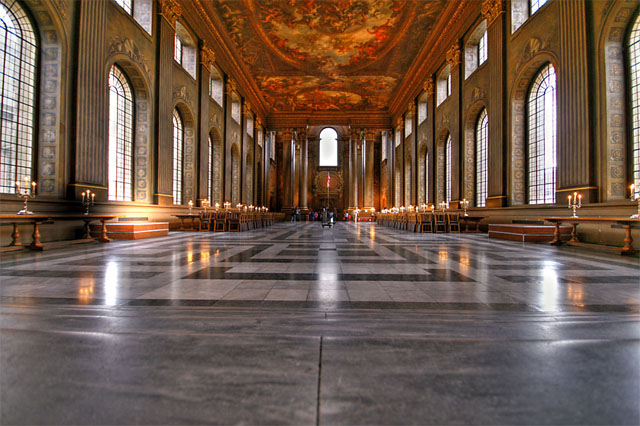 Painted Hall
Painted Hall
Royal Hospital
Greenwich, London
The strange thing is that none of the nineteenth-century writers (except Carlyle and Ruskin) seemed to notice that the triumph of rational philosophy had resulted in a new form of barbarism. If, from the balcony of the Greenwich Observatory, I look beyond the order of Wren’s hospital I see, stretching as far as the eye can reach, the squalid disorder of industrial society. It has grown up as a result of the same conditions that allowed the Dutch to build their beautiful towns and support their painters and print their works of philosophers: fluid capital, a free economy, a flow of exports and imports, a dislike of interference.
Every civilisation seems to have its nemesis, not only because the first bright impulses become tarnished by greed and laziness, but because of unpredictables—and in this case the unpredictable was the growth of population.
For an introduction to these series, see here.
Below, some indented excerpts of “Man—the Measure of all Things,” the fourth chapter of Civilisation by Kenneth Clark, after which I offer my comments.
Ellipsis omitted between unquoted passages:
The Pazzi Chapel, built by the great Florentine Brunellesco in about 1430, is in a style that has been called the architecture of humanism. His friend and fellow-architect, Leon Battista Alberti, addressed man in these words: ‘To you is given a body more graceful than other animals.’
There is no better instance of how a burst of civilisation depends on confidence than the Florentine state of mind in the early fifteenth century. For fifty years the fortunes of the republic, which in a material sense had declined, were directed by a group of the most intelligent individuals who have ever been elected to power by a democratic government. From Salutati onwards the Florentine chancellors were scholars, believers in the studia humanitatis, in which learning could be used to achieve a happy life.
In Florence the first thirty years of the fifteenth century were the heroic age of scholarship when new texts were discovered and old texts edited. It was to house these precious texts, any one of which might contain some new revelation that might alter the course of human thought, that Cosimo de Medici built the library of San Marco. It looks to us peaceful and remote—but the first studies that took place there were not remote from life at all. It was the humanist equivalent of the Cavendish Laboratory. The manuscripts unpacked and studied under these harmonious vaults could alter the course of history with an explosion, not of matter, but of mind.
The discipline of trade and banking, in its most austere form, was beginning to be relaxed, and life—a full use of the human faculties—became more important than making money.
The dignity of man. Today these words die on our lips. But in the fifteenth century Florence their meaning was still a fresh and invigorating belief. Gianozzo Manetti, a humanist man of affection, who had seen the seamy side of politics, nevertheless wrote a book entitled On the Dignity and Excellence of Man. And this is the concept that Brunellesco’s friends were making visible.
Gravitas, the heavy tread of moral earnestness, becomes a bore if it is not accompanied by the light step of intelligence. Next to the Pazzi Chapel are the cloisters of Santa Croce, also built by Brunellesco. I said that the Gothic cathedrals were hymns to the divine light. These cloisters happily celebrate the light of human intelligence, and sitting in them I find it quite easy to believe in man. They have the qualities that give distinction to a mathematical theorem: clarity, economy, elegance.
Alberti, in his great book on building, describes the necessity of a public square ‘where young men may be diverted from the mischievousness and folly natural to their age.’ The early Florentine Renaissance was an urban culture, bourgeois properly so-called. Men spent their time in the streets and squares, and in the shops.
Elsewhere I’ve talked about how the modern world of money is inimical to racial interests. As to date, no white nationalist that I know has criticized the barbarous architecture, symptomatic in the worshiping of the new god of capitalism, so well epitomized in both London and New York: the subject of the last episode of Civilisation.
Together with the degenerate music, TV and Hollywood tastes and sexual lifestyles of some nationalists, architecture is another facet where the uncorrupted individual can read the signs of a decadent society; and why he cannot blame non-gentiles for all our problems when even the nationalists themselves are part of this problem.
Remember Clark’s words in the first episode? “If I had to say which was telling the truth about society, a speech by a Minister of Housing or the actual buildings put up in his time, I should believe the buildings.” One only has to contrast the completely soulless edifices we see everyday going to work with Raphael’s town square and see how extremely degraded, Mammonesque in fact our large cities have become.
In the popular imagination, the extreme examples of this degeneracy are the Foundation novels of Asimov and the latest Star Wars films, where a whole planet has become metropolis: the exact opposite of the most humane sci-fi novels by Arthur C. Clarke where, like the Florentines, the white people lived in small Elysian towns. Architecture today is so degenerate that even Roger Scruton in Why Beauty Matters—a 2009 BBC documentary that, unlike Clark’s Civilisation, is marred by the constant presence of non-whites—pays special attention to the sterile architectural forms of today’s world.
I wish young nationalists became believers in the studia humanitatis and familiarise themselves with those intellectuals in the movement that (like Clark) have a much broader sense of European culture than the common white nationalist blogger. I refer to people like Tom Sunic in Europe and Michael O’Meara in America. Both could help us to leave behind the provincial scene so common in the nationalist sphere as well as the simplistic single-cause hypothesis.
It is true that, unlike the Athenians, fifteenth century Florentines were chiefly interested, like contemporary western man, in making money. But like the Athenians the Florentines… loved beauty. Of the landscapes whose beauty mostly caught my attention during a trip through Europe by train, I still remember the Italian, about which Clark said:
Looking at the Tuscan landscape with its terraces of vines and olives and the dark vertical accents of the cypresses, one has the impression of timeless order. There must have been a time when it was all forest and swamp—shapeless, formless; and to bring order out of chaos is a process of civilisation.
Then, in the first years of the sixteenth century, the Venetian painter Giorgione transformed this happy contact with nature into something openly sensual. The ladies who, in the Gothic gardens, had been protected by voluminous draperies, are now naked; and, as a result, his Fête Champêtre opens a new chapter in European art. Giorgione was, indeed, one of the inspired, unpredictable innovators who disturb the course of history; and in this picture he has illustrated one of the comforting illusions of civilised man, the myth of Arcadia, which had been popularised some twenty years earlier by the poet Sannazaro. Of course, it is only a myth. Country life isn’t at all like this, and even on a picnic ants attack the sandwiches and wasps buzz round the wine glasses. But the pastoral fallacy had inspired Theocritus and Virgil, and had not been unknown in the Middle Ages. Giorgione has seen how fundamentally pagan it is.
True, but I don’t believe that the pastoral fallacy is childish. Pace Arthur Clarke, achieving Arcadia is an essentially psychogenic endeavour rather than a technological one. And I sincerely believe that utopia is feasible: only human primitivism, and especially the “monsters from the Id” currently affecting the white peoples, prevent it.
It has long seemed to me wise thinking about an ideal to direct our efforts toward it. It doesn’t matter if the ideal encounters numerous pitfalls: our will should incessantly be directional toward the worlds of the Florentine Fête. If the will of a sufficiently massive amount of white people is noble, the outside world can and will only represent the nobility of that will. Clark said:
With Giorgione’s picnic the balance and enjoyment of our human faculties seems to achieve perfection. But in history all points of supposed perfection have a hint of menace; and Giorgione himself discovers it in that mysterious picture known as the Tempesta.
What on earth is going on? What is the meaning of this half-naked woman suckling a baby, this flash of lightening, this broken column? Nobody knows; nobody has ever known.
To me the meaning is obvious. Even since the Renaissance artists started to see that the cities, more inclined to Mammon than to Raphael’s square, were places of tribulation in contrast to the madonna and her child with the man standing in contrapposto. Broken pillars often symbolize death (that bucolic world was about to die), and the painting’s storm in the background could be interpreted to symbolize urban turmoil.
